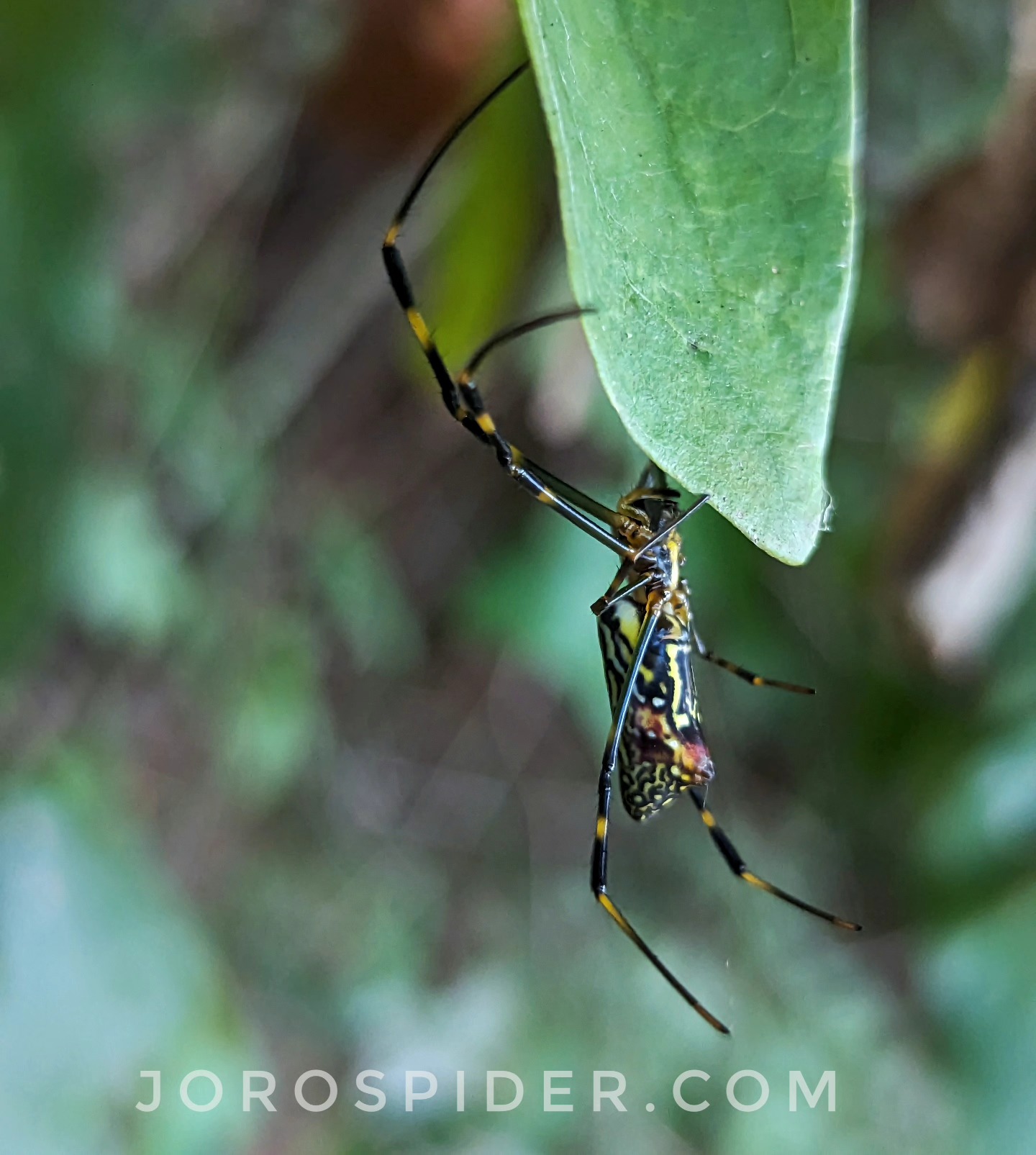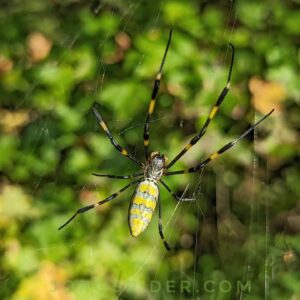Spider Factoids
Each fall, the screamers come out. No, not some rare monkey or an upset child. I mean the “burn the house down” crowd when they see a big spider on social media. They are trying to be cute, but all they do is whine and push fear. Why the fall? That’s when mama joros are gravid.
We know better, don’t we, Joro spider fans? We know two important things: Joro spiders aren’t dangerous and there are other spiders which are impressive in their own way.
Here are a few spider factoids to get you through the day. Send this link to your spider-phobic friends.
Biggest Spider in the World
The Goliath birdeater (Theraphosa blondi) holds the title for the world’s largest spider. This species is native to the rainforests of South America, including countries like Brazil, Venezuela, and Guyana. Goliath birdeaters are a type of tarantula and can have a leg span of up to 11 inches (28 centimeters) or more. While they are quite large and imposing in appearance, they are not a significant threat to humans, as their venom is not particularly potent, and they are not aggressive toward people. However, their name comes from an old and inaccurate belief that they eat birds, primarily their diet consists of insects, small rodents, and other invertebrates.
Biggest Spider in the United States
If you’re specifically interested in the largest spiders found in the United States, you might be referring to the Texas brown tarantula (Aphonopelma hentzi). While it’s relatively large compared to many other spider species in the U.S., it is not as massive as the Goliath birdeater tarantula. Texas brown tarantulas are mainly found in the southwestern United States and are known for their size and distinctive appearance.
Most Colorful Spider in the World
The world is home to a wide variety of colorful spiders, and it’s challenging to definitively declare one as the “most colorful” because colors can be quite subjective, and there are many species with vibrant and striking coloration. However, one of the most well-known and colorful spiders is the Peacock Spider (Maratus spp.), which is native to Australia.
Peacock spiders are small jumping spiders known for their stunning and intricate displays of color. The males, in particular, have evolved brilliant and iridescent colors on their abdomens, which they use in courtship displays to attract females. Each species of peacock spider has its unique color patterns, and they often have vibrant blues, reds, and yellows.
Another colorful spider is the Orchid Mantis (Hymenopus coronatus), which is not actually a spider but a mantis. However, it mimics the appearance of an orchid flower and exhibits a range of colors, including pinks and purples, to blend in with its surroundings and ambush prey.
Other colorful spider species can be found around the world, each with its unique and dazzling coloration. Keep in mind that the perception of color can vary among individuals, so what one person finds the most colorful might differ from another’s opinion.
Deadliest Spider in the World
The title of “deadliest spider in the world” is often associated with the Brazilian wandering spider (Phoneutria spp.), particularly the species Phoneutria nigriventer. This spider is sometimes referred to as the “armed spider” or “banana spider” in South America.
The Brazilian wandering spider is considered one of the most venomous spiders on the planet based on the potency of its venom. Its venom contains a neurotoxin that can cause paralysis and, in severe cases, death if not treated promptly. However, it’s important to note that actual fatalities from Brazilian wandering spider bites are relatively rare, thanks to the availability of antivenom and prompt medical attention.
It’s also worth mentioning that these spiders are not typically aggressive toward humans and will generally only bite when they feel threatened. They are called “wandering” spiders because they do not build webs but instead actively hunt for prey.
While the Brazilian wandering spider is known for its potent venom, there are other venomous spiders in the world, such as the Sydney funnel-web spider (Atrax robustus), the funnel-web spiders of Australia (Atracinae), and the redback spider (Latrodectus hasseltii), that can also pose a significant threat to humans. However, fatalities from spider bites are quite rare worldwide, and most spiders are not dangerous to humans.


Let’s Face It
All of these cool spider factoids doesn’t change the truth: Joro spiders are the coolest of the bunch.
The Stuff of Nightmares or Gardens?
Maybe both. As you learn more, the nightmares will disappear.
See our sponsors: American Speechwriter and Tree Fort Books
© Copyright 2025 All Rights Reserved. JoroSpider.com
This site may contain affiliate links so I earn a commission.
Read: The Raging Giant Blue Goldfish - 22 Short Stories


